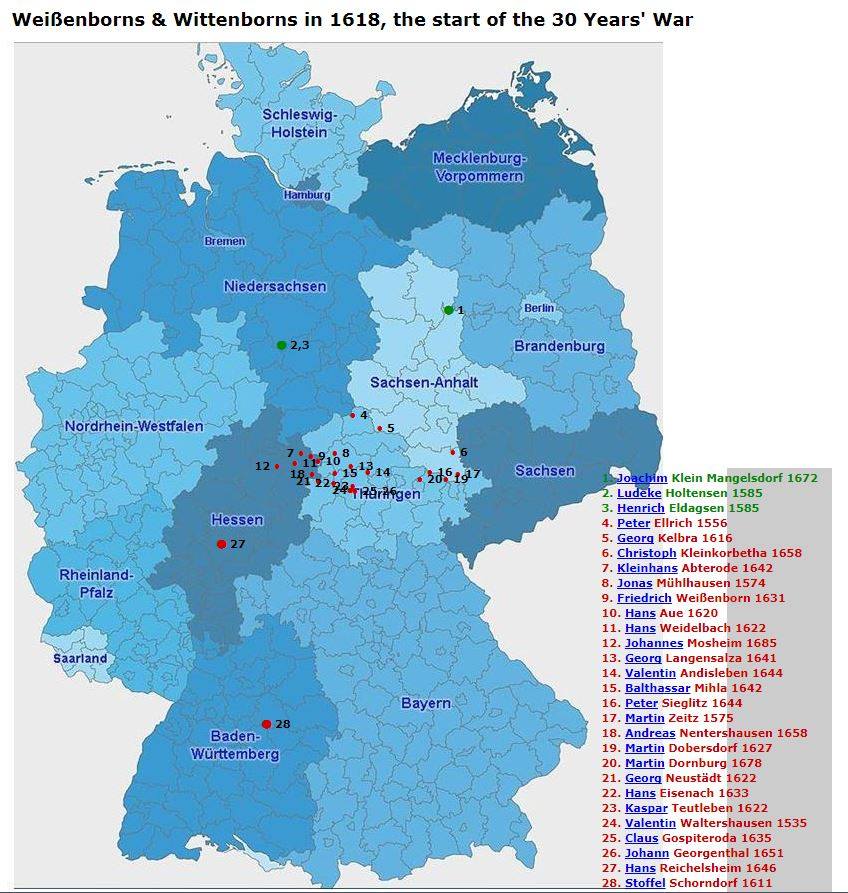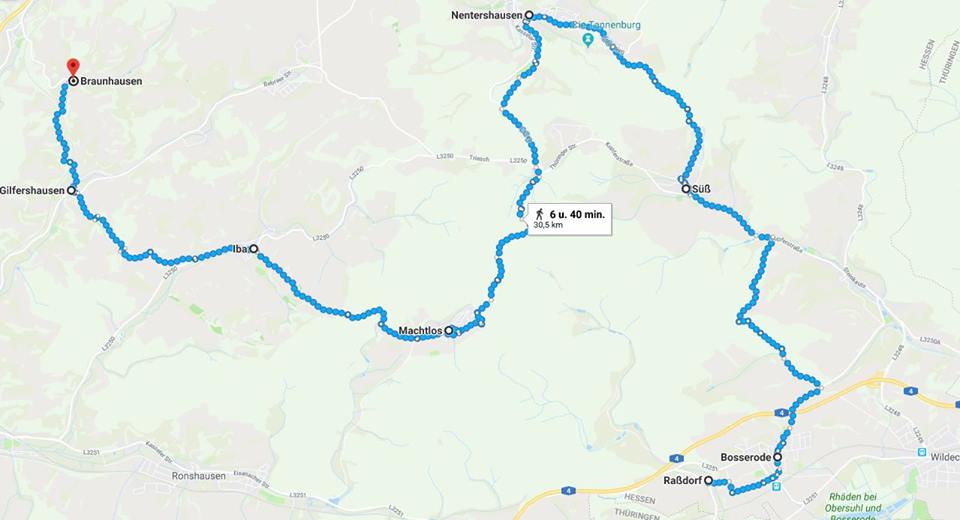44. Süß, a village that moved from Thüringen to Hessen, with Weißenborns and all.
Posted on Facebook on 4 January 2018. One of the 28 men I have included on the first map who carried either the name Wittenborn (in green) or Weißenborn (in red) in 1618, at the start of the Thirty Years' War, is Andreas Weißenborn. I have taken the data about Andreas and his descendants partly from Heritage and the remainder from open sources. The persons who have provided these data state that Andreas and his son Johannes were born in Nentershausen in about 1605 and 1630, respectively. The first hard data are however the marriage of Johannes and Ursula Lang in nearby Süß - see the second map - on 8 February 1658 and the baptism in Süß of their daughter Veronica on 10 December 1658. Andreas Weißenborn was most likely alive in 1639. Nentershausen is currently part of Hessen. Andreas is however not mentioned in the transcription of the Hessische Mannschaftsregister of 1639 made by Hilmar Milbradt in 1959. A scan of this transcription can be found here. Was Nentershausen part of Hessen in 1639? Politically yes, but in practice not yet. The family von Baumbach had lent Nentershausen and several neighbouring villages from the monastery Hersfeld at least since 1365, and held both the higher and lower jurisdiction. In 1578 the von Baumbachs were forced to yield the higher jurisdiction to Landgrave Wilhelm IV of Hesse-Kassel, who included Nentershausen politically within Amt Sontra. The von Baumbachs kept the lower jurisdiction until 1806. Meanwhile the monastery Hersfeld became the princedom Hersfeld at the death of abbot Joachim Röll in 1606, as he had nominated prince Otto von Hessen, grandson of Wilhelm IV, as administrator of the abbey and hence effectively as his successor. When Otto died in 1617, at the tender age of 22, the princedom Hersfeld and the title legally fell to the house Hesse-Kassel. However, this was sanctioned only in 1648, after the Thirty Years' War. If Andreas and his son Johannes lived in Nentershausen in 1639, they were in a factual no-mans land. They may however have lived in nearby Süß, which was firmly part of Thüringen until 1733, when Landgrave Friedrich von Hessen dropped his claims on Amt Hausbreitenbach and received among others this village as compensation. They would have been better off in Süß: Thüringen suffered much less in the Thirty Years' War than Hessen, as it was predominantly Lutheran while Hessen was predominantly Calvinist. The Calvinists were disliked by all other parties, while the Lutherans got along quite well with most other parties. Why are Andreas and Johannes and the village of Süß of interest? Because it seems that, apart from a few missing links, Andreas and Johannes are forebears and Süß the ancestral village of a family tree of some 150 persons, with major branches in Hazleton in Luzerne County, Pennsylvania and Iba in Hesse-Kassel. Both branches very likely have descendants in the present time. I may add that the data about Andreas and his descendants took me well above the 9000th entry in my database. If my estimate of 10,000 Wittenborns and Weis(s)enborns c.q. Weißenborns from 1600 to the present day holds good, there are only some 1000 more persons to find and my research is already 90% done. Once this project is finished and published, I will miss it dearly.

